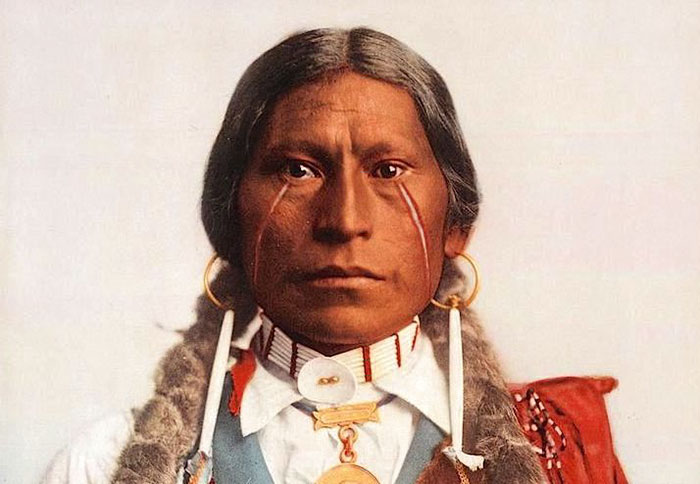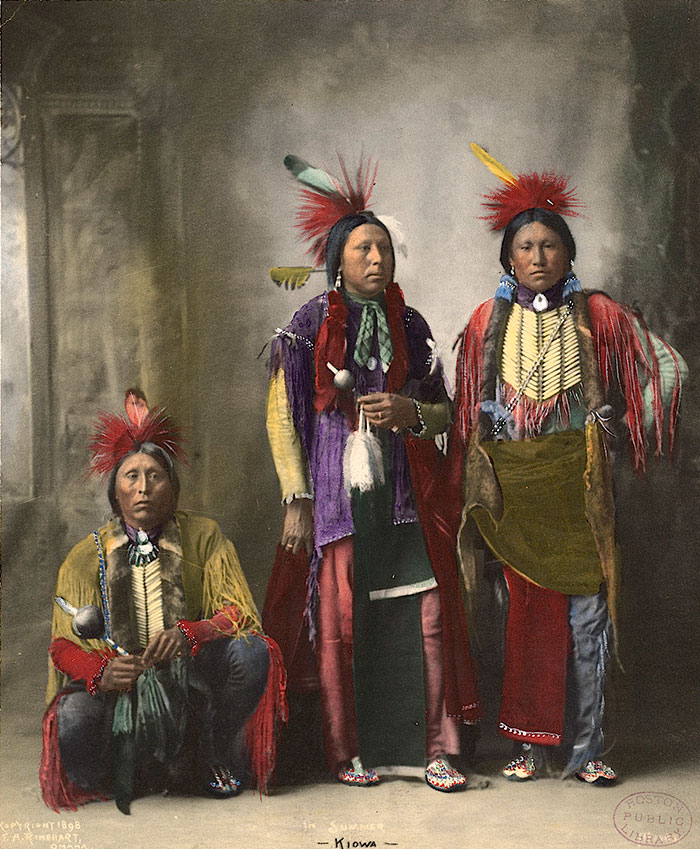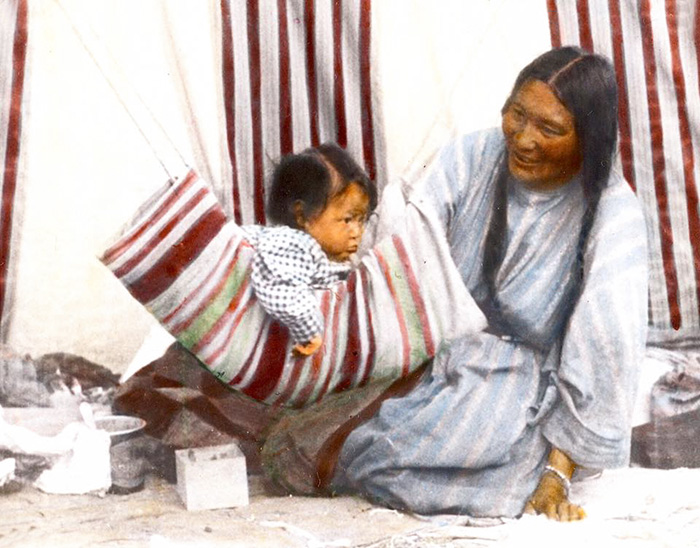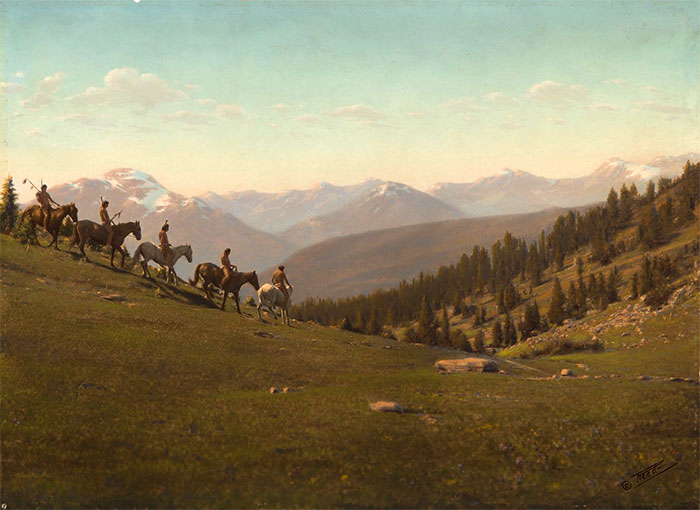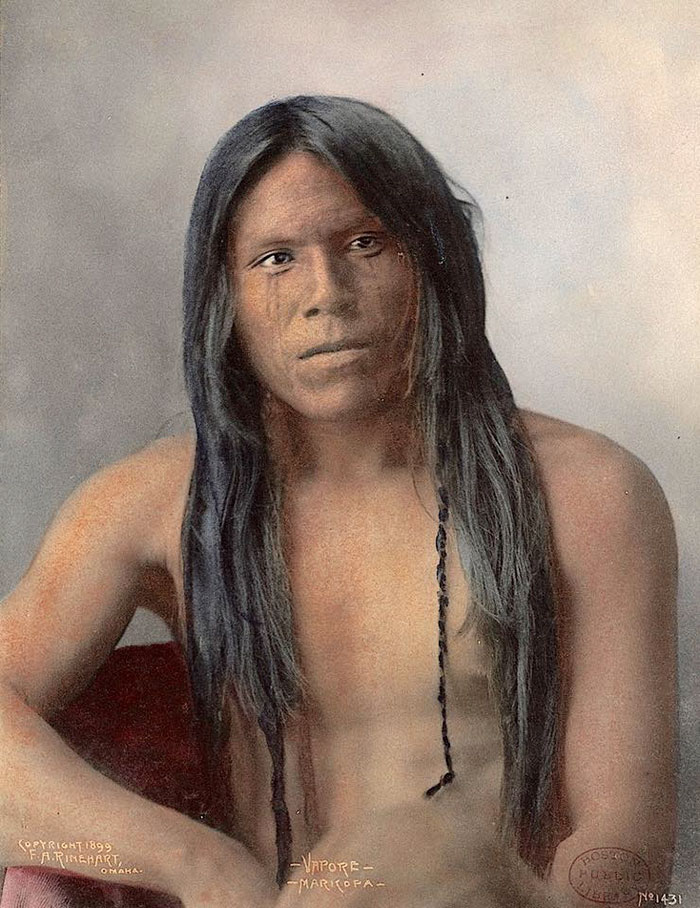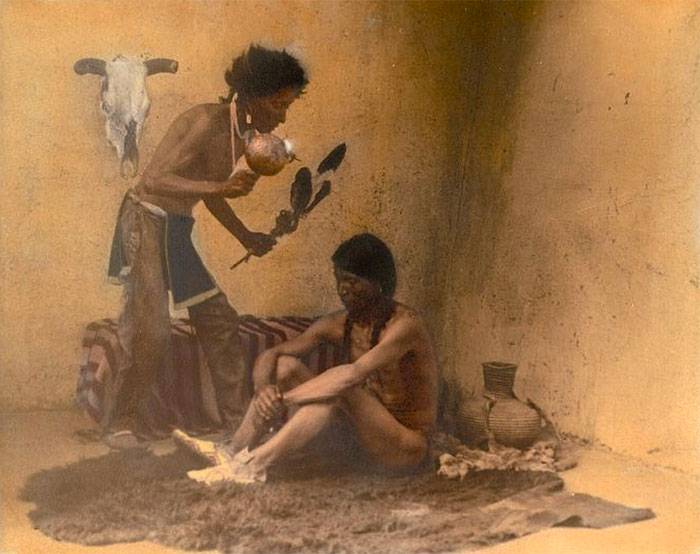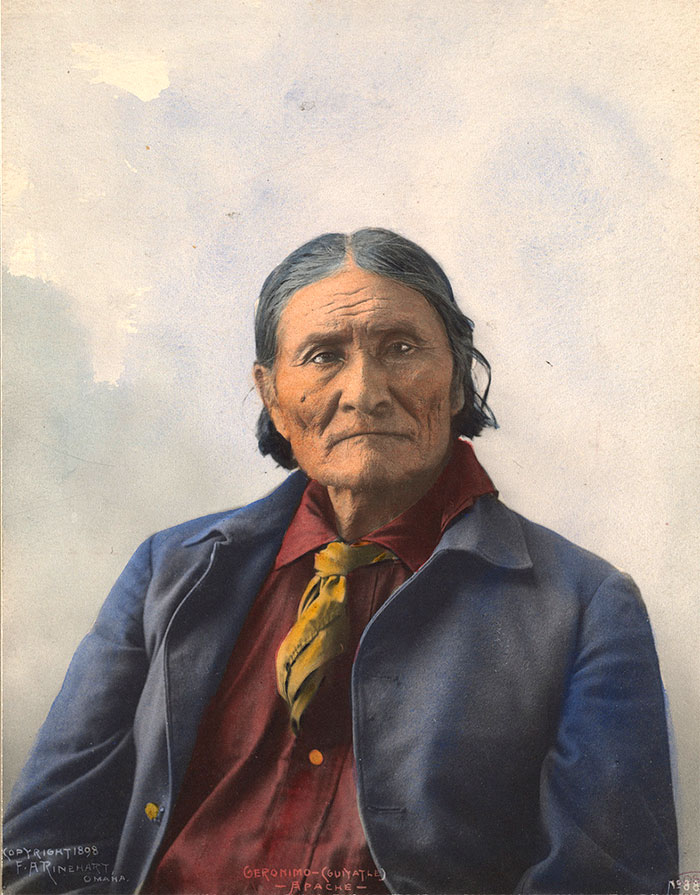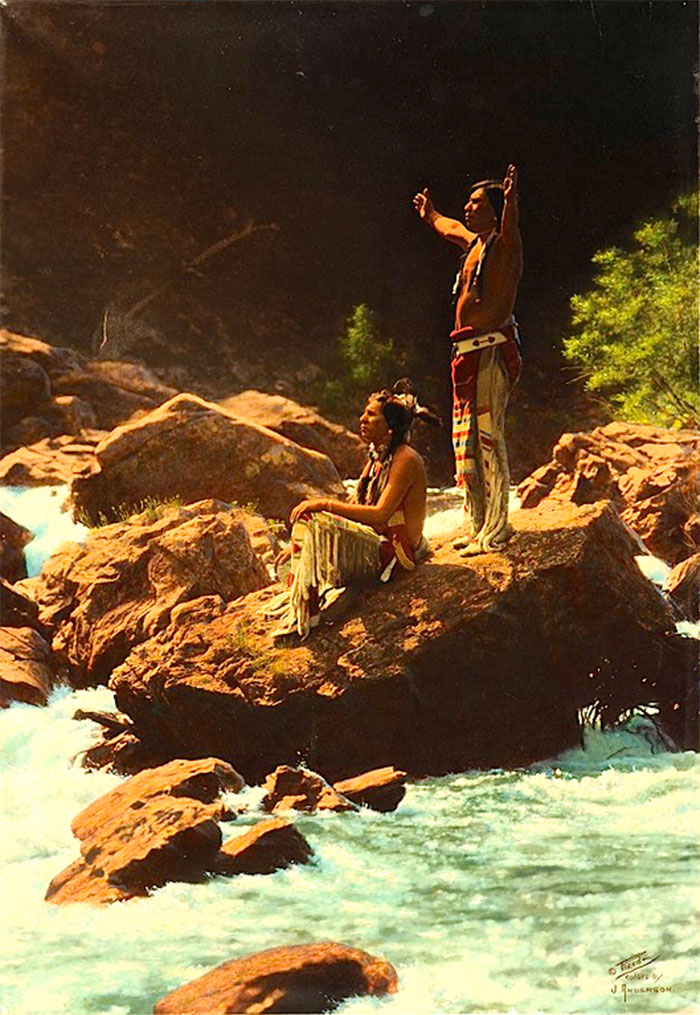
47 Rare Colour Photos Of Native Americans From The 19th And 20th Century
Film-maker Paul Ratner developed a passion for researching old photographs of indigenous people while making "Moses on the Mesa", a film about a German-Jewish immigrant who fell in love with a Native-American woman and became governor of her tribe of Acoma Pueblo in New Mexico in the late 1800s.
“What has been most gratifying to me about researching old photos of Native Americans is when the relatives of the people featured in the photos discover them through our popular Facebook page," Ratner told Bored Panda. "Many of them have never seen these photos and are excited to find them. It is also exciting when folks correctly identify the people and the tribes pictured in the photos since the archives or vintage photo auctions often have incorrect or incomplete information. I feel like through this process we are reclaiming some lost history.”
More info: filmsbygiants.com | Facebook (h/t: huffpost)
This post may include affiliate links.
Minnehaha. 1904
Bone Necklace. Oglala Lakota Chief. 1899. Photo By Heyn Photo
This man has a sensitive, intelligent face and beautiful hands. This is an example of those who fell victim to the brutality of those who wanted their land. Sensitive face and beautiful hands. This man is an example of those we murdered for land.
Blackfeet Tribal Camp With Grazing Horses. Montana. Early 1900s. Glass Lantern Slide By Walter Mcclintock
Eagle Arrow. A Siksika Man. Montana. Early 1900s. Glass Lantern Slide By Walter Mcclintock
Blackfeet Girl. Montana. Early 1900s. Glass Lantern Slide By Walter Mcclintock
Chief James A. Garfield. Jicarilla Apache. 1899. Photo By William Henry Jackson
The Apaches were among the fiercest fighters, much feared. Death was meted out slowly and painfully.
"Painted Tipis Of The Headmen". Blackfeet. Montana. Early 1900s. By Walter Mcclintock
Arrowmaker, An Ojibwe Man. 1903
"Ringing Bell". 1908. Minnesota. Handpainted Photo Print By Roland W. Reed
Handpainted Print Of A Young Woman By The River. Early 1900s. Photo By Roland W. Reed
Charles American Horse (the Son Of Chief American Horse). Oglala Lakota. 1901. Photo By William Herman Rau
Chief Little Wound And Family. Oglala Lakota. 1899. Photo By Heyn Photo
Cheyenne Chief Wolf Robe. Color Halftone Reproduction Of A Painting From A F. A. Rinehart Photograph. 1898
The Cheyenne were the Indian's Indian -- their ethics, beliefs, and philosophical ideas were greatly honored by the other Indian tribes.
”In Summer”. Kiowa. 1898. Photo By F.a. Rinehart
“Songlike”, A Pueblo Man, 1899. Photo By F.a. Rinehart
Visited the Pueblo Indian reservation in New Mexico. Amazing place with a burial ground in the mountains above it.
Walks-in-the-water (soya-wa-awachkai) And Her Baby Koumiski (round Face). Siksika. Montana. Ear
Amos Two Bulls. Lakota. Photo By Gertrude Käsebier
She Who Travels In The Sky. Ojibwe. 1908. Photo By Roland Reed
"The Chippewa Indians, also known as the Ojibway or Ojibwe, lived mainly in Michigan, Wisconsin, Minnesota, North Dakota, and Ontario. They speak a form of the Algonquian language and were closely related to the Ottawa and Potawatomi Indians. The Chippewas were allies of the French and French traders often married Chippewa women. Chippewa warriors fought with the French against the British in the French and Indian War. But political alliances changed with the times. During the American Revolution the Chippewas sided with the British against the Americans. "
Northern Plains Man On An Overlook. Montana. Early 1900s. Hand-colored Photo By Roland W. Reed
Blackfeet Children (including "sa-ko-uka-etsusin"). Montana. Early 1900s. Glass Lantern Slide B
Note the exquisite beading; the Blackfeet were known for their beading artistry.
Mrs. Bad Gun. 1879. Cheyenne. Photo By L.a.huffman
The Cheyenne were fierce warriors, and they had a very strong culture. They learned to read and write.
Handpainted Print Depicting Five Riders Going Downhill In Montana. Early 1900s. Photo By Roland W. Reed
" The Crow are a northern Plains tribe, famous for their expert horsemanship and especially long hair. The Crow tribe are now mostly located on a reservation south of Billings, Montana. Some historians believe the early home of the Crow-Hidatsa ancestral tribe was near the headwaters of the Mississippi River in either northern Minnesota or Wisconsin; others place them in the Winnipeg area of Manitoba. Later the people moved to the Devil's Lake region of North Dakota before the Crow split from the Hidatsa and moved westward. The Crow were largely pushed Westward by the intrusion and influx of the Sioux, the Sioux being pushed West themselves by American expansion. Once established in Montana and Wyoming, the Crow eventually divided into two groups: the Mountain Crow and River Crow. --The Crow had more horses than any other Plains tribe; in 1914 they numbered approximately thirty to forty thousand head "
Si Wa Wata Wa. A Zuni Elder. New Mexico. 1903. Photo By Edward S. Curtis
A Blackfoot Couple. Montana. Early 1900s. Glass Lantern Slide By Walter Mcclintock
"Coming Running". Blackfeet Woman With Children. Montana. Early 1900s. Glass Lantern Slide By W
Ojibwe Woman. Early 1900s. Photo By Roland Reed
Piegan Couple. Ca. 1890-1910. Glacier National Park, Montana. Colorized Photo/postcard
Night-herder On Lookout Butte Overlooking Old Man's River. Blackfeet. Montana. Early 1900s. Gla
Thank you so much sir Dr Okokoma herbal home, for curing my herpes virus totally. Am so grateful sir Dr Okokoma herbal home you are indeed a great herbalist and you have been curing people of their various virus. viewers if you are suffering from any virus and you don't know the cure to it, rush now and contact this great herbalist on his personal email[ Drokokoma@gmail.com or WhatsApp him on +2349159223633 For your sure cure.
Red Stripe Tipi And The Thunder Tipi. Siksika Camp. Montana. Early 1900s
Blackfeet Family. Montana. Early 1900s. Glass Lantern Slide By Walter Mcclintock
Vapore. Maricopa. 1899. Photo By F.a. Rinehart
A Medicine Man With Patient. Taos Pueblo, New Mexico. 1905. Photo By Carl Moon
Taos has a very old Pueblo settlement. Visited there and ate some of the most delicious bread I ever had. Brought home a recipe and some ingredients, but never able to duplicate it. Might be the old clay ovens.
Broken Arm. Oglala Lakota. Ca. 1899. Photo By F.a. Rinehart
Acoma Pueblo. New Mexico. Early 1900s. Photo By Chicago Transparency Company
I found that "early 1900's " to be interesting, as I had actually thought it looked more current. I'd image that's because it has been colored. I like this one!
Geronimo (goyaałé). Apache. 1898. Photo By F.a. Rinehart
Geronimo means "one who yawns" - He surrendered MANY times and was eventually put on Apache reservations in Arizona. Geronimo eventually became a celebrity. He appeared at fairs, including the 1904 World's Fair in St. Louis,and sold souvenirs and photographs of himself. However, he was NEVER allowed to return to the land of his birth. He died at the Fort Sill hospital in 1909 AND he was still a prisoner of war. He is buried at the Fort Sill Indian Agency Cemetery surrounded by the graves of relatives and other Apache prisoners of war. This man was used and abused beyond belief
Piegan Men Giving Prayer To The Thunderbird Near A River In Montana. 1912. Photo By Roland W. Reed
Ute Chief Ignacio. 1870-1890
Tribal history states that at age fourteen he killed every member of a rival family to avenge the murder of his father.
A Woman By The Star Tipi In Blackfoot Camp. Early 1900s
Riders With Coup Sticks. Blackfeet. Montana. Early 1900s. Glass Lantern Slide By Walter Mcclint
The idea was to ride into battle and touch an armed enemy with your coup stick, bringing great honor to you and your tribe -- it was called "counting coup."
"Hiawatha's Return." 1904. Photo By Detroit Photographic Co
Thunder Tipi Of Brings-down-the-sun. Blackfoot Camp. Early 1900s. Glass Lantern Slide By Walte
Old Coyote (aka Yellow Dog). Crow. Original Photo Circa 1879 (color Tinted Circa 1910)
A Crow Dancer. Early 1900s. Photo By Richard Throssel
Strong Left Hand And Family. Northern Cheyenne Reservation. 1906. Photo By Julia Tuell
Pulling the children in this manner was not uncommon for those too big for mom to carry but too small to keep up with traveling.
Bear Chief Cutting A Green Hide. Blackfeet. Montana. Early 1900s. Glass Lantern Slide By Walter
Chief Mad Wolf. Blackfeet. Montana. Early 1900s. Glass Lantern Slide By Walter Mcclintock
Chief Hollow Horn Bear. Sicangu Lakota. 1905. Photo By Delancey W. Gill
Excuse me please. I imagine that you might miss having smart phones, vaccines, autos, and indoor plumbing.
Load More Replies...I grew up in Montana by Glacier Park. I wish as a child i had a greater appreciation for diversity like i do now. Beautiful people & photo
Sincere, unique, beautiful... Makes me wanna build a time machine... :-)
Me too. 🥺 It's like we're living in the wrong timeline, one where the sweetest and kindest people were met with unspeakable cruelty.
Load More Replies...Excuse me please. I imagine that you might miss having smart phones, vaccines, autos, and indoor plumbing.
Load More Replies...I grew up in Montana by Glacier Park. I wish as a child i had a greater appreciation for diversity like i do now. Beautiful people & photo
Sincere, unique, beautiful... Makes me wanna build a time machine... :-)
Me too. 🥺 It's like we're living in the wrong timeline, one where the sweetest and kindest people were met with unspeakable cruelty.
Load More Replies...
 Dark Mode
Dark Mode 

 No fees, cancel anytime
No fees, cancel anytime 












